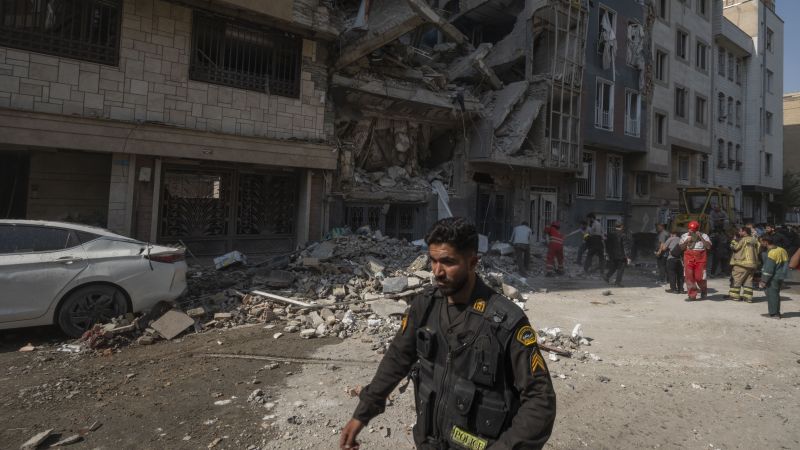In the spring of 2023, President Donald Trump set forth a stark ultimatum to Iran’s Supreme Leader Ali Khamenei: negotiate a nuclear deal within 60 days, by mid-June, or face dire consequences. This declaration of intent came alongside an appeal to Israeli Prime Minister Benjamin Netanyahu to refrain from initiating military strikes against Iran during this critical negotiation window. However, tensions simmered beneath the surface, as Israeli officials privately insisted they were prepared to attack Iran regardless of the diplomatic efforts.
As the clock ticked down on the ultimatum, a small delegation of U.S. lawmakers met Netanyahu in Jerusalem, where he articulated Israel’s determination to strike Iran’s nuclear capabilities, asserting that no prior approval from the U.S. was necessary. This forthright declaration underpinned the urgency surrounding Israel’s calculations. Netanyahu’s stark rhetoric to the visiting legislators was clear: “We fight or we die,” conveying his nation’s existential urgency regarding Iran’s nuclear advancements. In response, Texas Representative Michael McCaul and New York Representative Michael Lawler urged Israeli officials to wait for Trump’s ultimatum to run its course.
On the 61st day of Trump’s ultimatum, Israel executed unprecedented strikes targeted at Iran’s nuclear facilities and military leaders. Attendees of the preceding discussions noted that these operations were not spontaneous reactions but the culmination of extensive planning over years. The Israeli government had long regarded Iran’s nuclear ambitions as a grave threat to its national survival, as articulated by Netanyahu.
While the Israeli leadership was resolute in its approach, the Trump administration had knowledge of the impending attacks. U.S. officials were acutely aware of Netanyahu’s intentions and continued to apply pressure on Iran in hopes of maintaining negotiation channels, even as military options loomed large. Throughout Trump’s presidency, he attempted to position himself as a dealmaker, having withdrawn the United States from the landmark Obama-era nuclear deal in 2018 while also signaling a desire to establish a new framework with Iran. However, as the deadline for diplomatic talks approached, Iran had made significant progress towards its nuclear weapons capabilities, complicating the negotiation landscape further.
Israel was meticulously preparing for a potential confrontation. The Mossad, Israel’s intelligence agency, had infiltrated Iran and worked on countering Iranian defenses from within by smuggling weaponry. An offensive strategy was put in place, which included launching explosive drones from bases established inside Iran, highlighting the urgency felt by Israeli leaders. Israel’s Defense Minister Israel Katz announced that the timing of the strikes was crucial to incapacitate Iran’s capabilities and prevent a future nuclear threat.
In the backdrop, talks mediated by special presidential envoy Steve Witkoff were ongoing but faced constant disruption from Israeli military calculations. These diplomatic efforts were coming to a head just as an International Atomic Energy Agency (IAEA) board meeting condemned Iran for its violations of nuclear non-proliferation obligations, a resolution that drew significant international attention.
Just hours before the Israeli strikes commenced, the United States urged various nations, perceived as persuadable, to align with its stance on Iran. The U.S. administration maintained its commitment to the ongoing nuclear discussions even after the military actions, indicating a desire to salvage diplomatic possibilities. Trump expressed cautious optimism, suggesting Iran could have another opportunity for negotiation, despite mounting tensions. He reflected on the importance of dialogue, clinging to the hope for a resolution without further bloodshed.
As the strikes on Iranian targets unfolded, rapid developments ensued. Iran responded by launching attacks on numerous military installations in Israel, further escalating tensions in the region. The Trump administration’s attention shifted to monitoring the implications of Iran’s retaliatory actions, particularly concerning U.S. personnel stationed in the Middle East, especially in Iraq—given the proximity to Iran and the presence of proxy militias with loyalty to Tehran. Intelligence assessments anticipated potential Iranian retaliation, ranging from direct military engagements to cyberattacks aimed at U.S. infrastructure.
Overall, this sequence of events marked a pivotal moment in U.S.-Iran relations, showcasing the complexities and intricacies that characterize Middle Eastern geopolitics, along with the fragile balance between diplomacy and military action. The strategic calculations made during this tense period would have long-lasting repercussions for regional stability and international diplomatic efforts.



